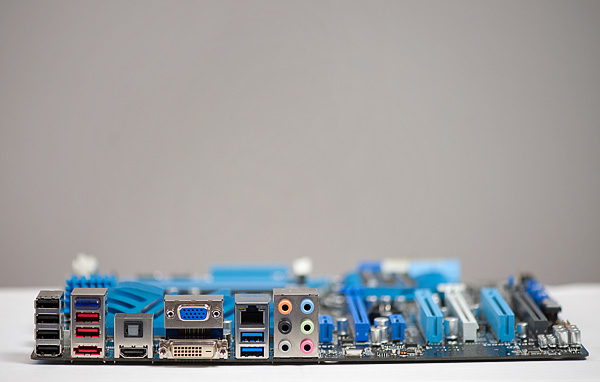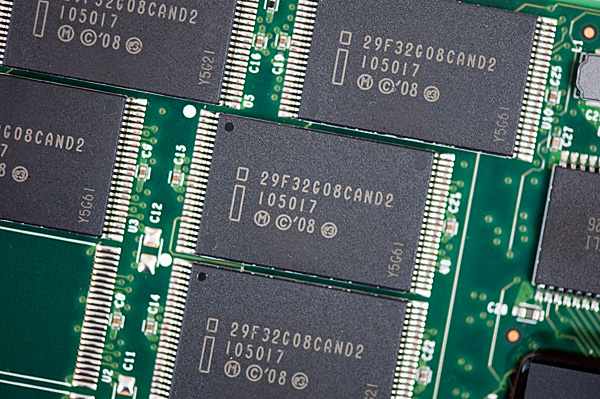Intel Z68 Chipset & Smart Response Technology (SSD Caching) Review
by Anand Lal Shimpi on May 11, 2011 2:34 AM ESTFinal Words
Intel's Z68 should have been the one and only high end launch chipset offered with Sandy Bridge. It enables all of the configurations we could possibly want with Sandy Bridge and does so without making any sacrifices. Users should be able to overclock their CPU and use integrated graphics if they'd like. While Z68 gives us pretty much exactly what we asked for, it is troubling that we even had to ask for it in the first place. With Intel holding onto a considerable performance advantage and a growing manufacturing advantage, I am worried that this may be a sign of things to come. It was strong competition from AMD that pushed Intel into executing so flawlessly time and time again, but it also put Intel in a position where it can enforce limits on things like overclocking. Let's hope that Z68 corrected a mistake that we won't see repeated.
Intel's Smart Response Technology (SRT) is an interesting addition to the mix. For starters, it's not going to make your high end SSD obsolete. You'll still get better overall performance by grabbing a large (80-160GB+) SSD, putting your OS + applications on it, and manually moving all of your large media files to a separate hard drive. What SRT does offer however is a stepping stone to a full blown SSD + HDD setup and a solution that doesn't require end user management. You don't get the same performance as a large dedicated SSD, but you can turn any hard drive into a much higher performing storage device. Paired with a 20GB SLC SSD cache, I could turn a 4-year-old 1TB hard drive into something that was 41% faster than a VelociRaptor.
If you're building a system for someone who isn't going to want to manage multiple drive letters, SRT may be a good alternative. Similarly, if you're building a budget box that won't allow for a large expensive SSD, the $110 adder for an Intel SSD 311 can easily double the performance of even the fastest hard drive you could put in there. The most obvious win here is the lighter user that only runs a handful of applications on a regular basis. As our tests have shown, for light workloads you can easily get the performance of an X25-M G2 out of a fast hard drive + an SSD cache. Even gamers may find use in SSD caching as they could dedicate a portion of their SSD to acting as a cache for a dedicated games HDD, thereby speeding up launch and level load times for the games that reside on that drive. The fact that you can use any SSD as a cache is nice since it gives you something to do with your old SSDs when you upgrade.
I believe there's a real future in SRT, however it needs to be available on more than just the highest end Sandy Bridge motherboards. I'd like to see SSD caching available on all Intel chipsets (something that we'll get with Ivy Bridge and the 7-series chipsets next year), particularly on the more mainstream platforms since that appears to be the best fit for the technology. I would also prefer a larger cache drive offering from Intel (at least 40GB) as it wasn't that difficult to evict frequently used programs from the SSD cache. The beauty of NAND is that we'll of course get larger capacities at similar price points down the road. Along those lines I view SRT as more of a good start to a great technology. Now it's just a matter of getting it everywhere.












106 Comments
View All Comments
jordanclock - Wednesday, May 11, 2011 - link
You can use a drive for both, but you must set up your data partition AFTER you set up the cache partition.jorkolino - Wednesday, June 6, 2012 - link
What do you mean by that? You partition the SSD drive, install the OS in the first partition, set-up the other partition as a cache, and then format your remaining HDD?jorkolino - Wednesday, June 6, 2012 - link
I wonder, can you tell SRT to cache blocks only from the HDD onto the cache partition, because by default SRT may decide to cache system files that already reside onto a fast SSD partition...evilspoons - Wednesday, May 11, 2011 - link
I know it's early on for Z68, but I'm curious how other SSDs will perform in SRT mode. I ask because the 40 GB X25-V is on sale here for half its usual price...evilspoons - Wednesday, May 11, 2011 - link
To answer my own question, Tom's Hardware reviewed SRT with several SSDs and to put it bluntly, the X25-V sucks. Its very low write speed of 35 mb/sec actually drags the hard drive down in a few tests.Shadowmaster625 - Wednesday, May 11, 2011 - link
Yeah that is a nice way of putting it. Talk about sugar coating. Here is a question for ya: was intel being "conservative" when they tried to shove rambus down everyone's throats? If it werent for AMD and DDR god knows how much memory would cost now. I still have one of those rambus P4 systems running in the lab right now. (intel 850 chipset with dual channel RDRAM). I did some memory benchmarking on it and was shocked to find that it was actually slower than any of the P4 DDR 266 machines we have running. (Yes we are slow to upgrade lol.) It runs at about DDR200 equivalent speeds. And we really paid out the wazoo for that system.Shinobisan - Wednesday, May 11, 2011 - link
discrete graphics cards are limited - even though they often have three, four.. or more connectors these days, they can often only drive two monitors at a time. (unless you use a displayport connector... and monitors with DP don't really exist yet)I have two monitors driven by my HD6950 via the digital video out connectors. So the HDMI connector on that card is "dead" until I turn one of the monitors off.
What I would like to be able to do... is have my dGPU drive my two monitors, and the iGPU drive my 1080p TV via HDMI.
Can I do that? This discussion on virtu muddies the water some. unclear.
Conficio - Wednesday, May 11, 2011 - link
Well, so SRT is a good idea but again it is limited artificially in its use. Sounds to me like the P67/H67 stund all over again.Why is it limited?
* For starters it is driver supported, and I believe that means Windows only (I could find no mention of what OS is supported). To be fully useful it belongs into the chipset/BIOS realm.
* Next there is the artificial 64GB limit. As is obvious from even the tests that is not really the practical limit of its usefulness. It is simply a marketing limit to not compete with Intels own full SSD business. You got to ask yourself, why not use your aging SSD of 100GB or 256 GB (a couple years down the road) as an SRT drive?
* "With the Z68 SATA controllers set to RAID (SRT won't work in AHCI or IDE modes) just install Windows 7 on your hard drive like you normally would." So only RAID setups are supported? Well you are testing with a single hard drive, so this might be a confusing statement. But if it is RAID only then that is ceratinly not what Joe Shmoe has in its desktop (let alone in its Laptop).
A5 - Wednesday, May 11, 2011 - link
If the AT Heavy Workload Storage Bench is a typical usage case for you, than you shouldn't be using SRT anyway - you'd have a RAID array of SSDs to maximize your performance.jordanclock - Wednesday, May 11, 2011 - link
For caching purposes, I'm sure 64GB is a very reasonable limit. The more data you cache, the more data you have to pay attention to when it comes to kicking out old data.And it isn't a RAID set up, per se. You set the motherboard to RAID, but the entire system is handled in software. So Joe Shmoe wouldn't even have to know what a RAID is, though I don't see Joe Shmoe even knowing what a SSD is...